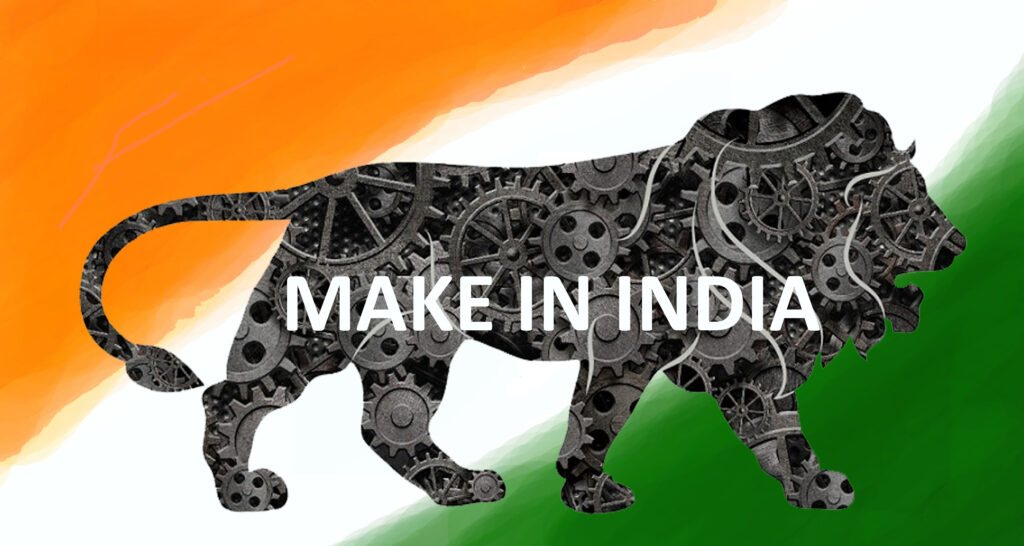India is undergoing a remarkable transformation in the global manufacturing landscape. Driven by government backed initiatives such as “Make in India” and Production Linked Incentive (PLI) schemes, the country is gradually positioning itself as a reliable and scalable global manufacturing powerhouse. These strategic programs are not just enhancing domestic production capacities but also realigning global supply chains to include India as a central node.
The Make in India Momentum
Launched in 2014, the Make in India initiative aimed to encourage companies to manufacture their products in India and incentive dedicated investments into the manufacturing sector. Over the years, this mission has evolved into a broader movement encompassing electronics, automotive, aerospace, defense, pharmaceuticals, textiles, and more. The government has actively simplified regulatory frameworks, introduced ease-of-doing-business reforms, and promoted digitization to support industrial growth.
As a result, India has climbed up global rankings in manufacturing competitiveness. Global brands that once relied heavily on China and Southeast Asia are now exploring or expanding their footprints in India. A notable example is Aequs is actively involved in trial production for components like MacBook enclosures and mechanical parts for Apple. Such collaborations are indicative of a major pivot in global sourcing strategies.
The Role of PLI Schemes in Strengthening Manufacturing
India’s PLI (Production Linked Incentive) schemes have emerged as a game-changer. Designed to boost domestic production and reduce import dependence, these schemes offer financial incentives to firms based on their production volumes and incremental sales. Covering 14 key sectors from electronics and pharmaceuticals to solar modules and white goods the PLI framework is to generate over ₹3.5 lakh crore in investments
For the electronics and mobile manufacturing sector, the PLI impact has been profound. Major global players such as Foxconn, Wistron, and Pegatron have ramped up their operations in India, driven by Apple’s shift toward localizing production. The Indian government is actively promoting local assembly, component manufacturing, and end-to-end ecosystem development to make the country an electronics export hub.
Reshaping the Manufacturing Supply Chain
One of the most significant outcomes of the Make in India movement and PLI schemes is the emergence of an export-oriented supply chain. Indian manufacturers are increasingly integrated into global value chains, supplying not just finished goods but also high-quality components and modules.
This evolution is also prompting upgrades in manufacturing logistics in India. From the development of multimodal logistics parks and dedicated freight corridors to the adoption of advanced technologies like IoT, AI, and robotics in warehouses. India’s logistics backbone is undergoing rapid modernization to support faster, more reliable, and cost-efficient movement of goods.
Moreover, the focus on reducing import dependency particularly in sectors like defense, electronics, and semiconductors is prompting companies to build deeper supplier networks within the country. Indigenous development of components, machinery, and raw materials is now a national priority.
Global Confidence in India’s Manufacturing Capabilities
The global sentiment toward India as a manufacturing destination is highly optimistic. Factors such as a large labor pool, competitive costs, improving infrastructure. And a supportive policy environment are working in India’s favor. The geopolitical realignment post-COVID-19 and rising concerns over over-dependence on other countries. Have also strengthened India’s appeal as a diversification destination for supply chains.
Conclusion
India’s ascent as a global manufacturing hub is not a matter of chance; it’s the result of deliberate. Sustained policy efforts under frameworks like Make in India and the PLI schemes. With a strong emphasis on creating an export-oriented supply chain, enhancing manufacturing logistics, and reducing import dependence. India is well on its way to becoming the factory of the world. As global players continue to invest and manufacture in India. The country is to not just make for India but make for the world.

